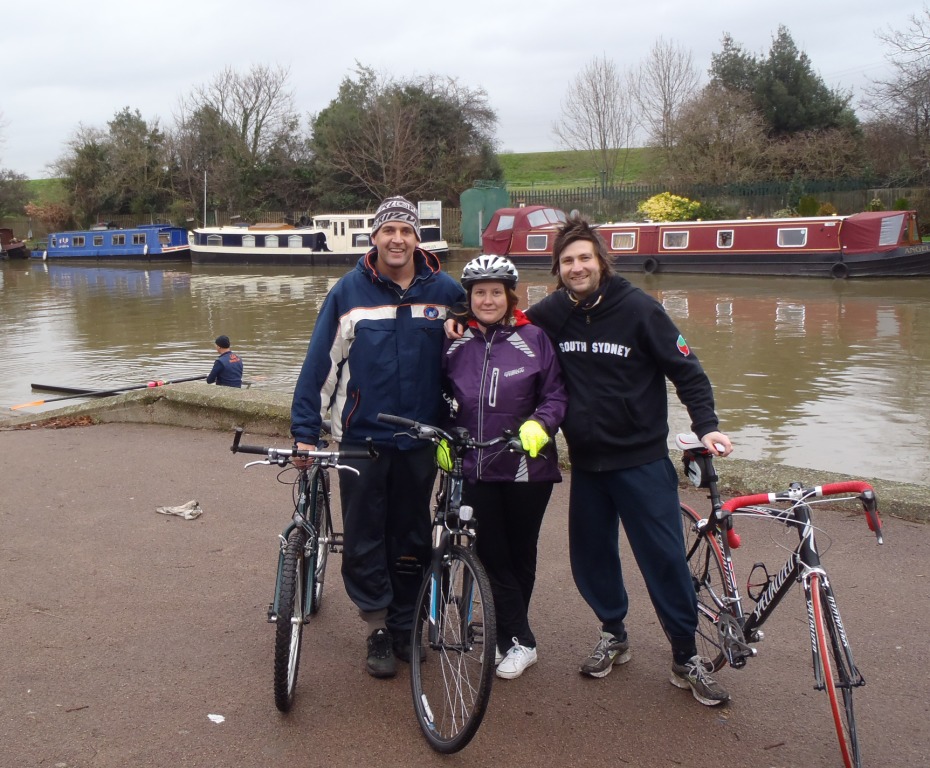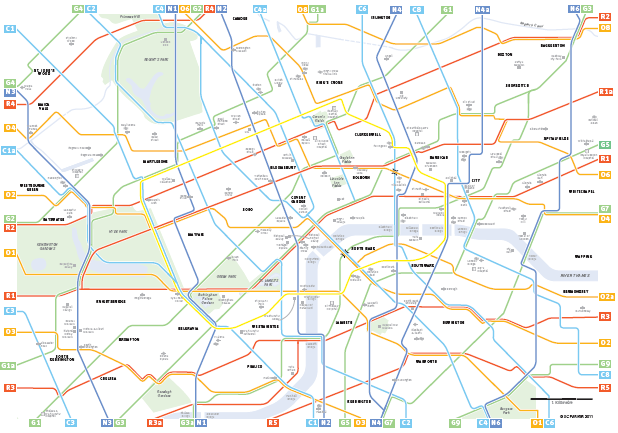It’s that time of year when millions of Britons resolve to ride their shiny new Christmas bicycles to burn off a few calories.
It’s also a time for the cycling community to make a resolution: to give new cyclists all the help we can.
The mayor will soon be publishing a new ‘Cycle Vision’ for the capital. At Cycle Lifestyle magazine, we want to make sure that a Tube-style map and network of cycle routes is on the agenda.
To help us achieve what would be an amazing, world-first for London, please help us spread the word.
The text below explains in simple terms what the London Cycle Map Campaign is all about. PLEASE RE-USE IT!
Let’s get everyone talking about this amazing plan to make the capital a happier and healthier place, where cycling is a mainstream activity.
The London Cycle Map Campaign
Rail and road commuters in London can experience more stress than a fighter pilot or a riot policeman going into action, according to a BBC report. No wonder so many Londoners are turning to the bicycle as a means of transport. Cycling enhances health and well-being, bringing the benefits of community, security, freedom and affordability to every day.
Yet, when it comes to cycling, the question on the lips of most Londoners is not why, but where? Would-be cyclists are put off by the thought of getting lost on a bike and straying onto the capital’s busiest roads and junctions. In order to coax more Londoners onto two wheels, we need to make cycle navigation easier.
At present, there are thousands of kilometres of cycle routes in London, like a huge tangle of spaghetti spread across the city. Hundreds of millions of pounds have been spent adding cycle lanes and other infrastructure improvements to these routes, most of which were developed as part of the London Cycle Network (LCN) project that began 30 years ago. Its founding aim was for people to be able cycle all over London on a vast, joined-up network of quieter, safer backstreets.
And you can – in theory. In practice, the LCN routes are poorly signed and even more poorly mapped, and underused as a result. The signs aren’t regular or informative enough to allow you to follow them as you go along, and the available maps – an online overview of the LCN, and 14 separate Transport for London paper guides – are far from user-friendly. If only there was a way of getting cyclists flowing round the LCN, it could become a vast set of capillaries, cleaning and revitalising the capital.
Simon Parker has come up with an amazing proposal for achieving this: a London Cycle Map. His great innovation, as detailed in the film London’s True Colours, has been to identify an incredible pattern in the capital’s tangle of cycle routes. Like a ‘magic eye’ picture, his map shows that within the chaos there’s structure: a series of long straight routes, like waves, transecting London in all directions and providing a direct connection between any two areas. His design is ‘almost as marvellously simple an invention as the bicycle itself’, as one commentator on cyclelifestyle.co.uk has said. Using Parker’s map, you could cycle from virtually anywhere to anywhere in the capital, by remembering no more than a few coloured routes then following signs and markings, just like on the Tube.
Well, you could if these were put in place. The cost of doing so could be covered entirely by sponsorship, and the rewards would be immense. Potential, not just regular cyclists would soon know they could confidently navigate beyond their local comfort zone; all Londoners, including the poorest, could get around in the capital for free; and visitors could experience the real London firsthand, cycling on its beautiful, bustling and cosmopolitan backstreets.
The novelist Victor Hugo once said: ‘an invasion of armies can be resisted, but not an idea whose time has come’. The time has come for a London Cycle Map; but like all great ideas it needs support.
You can find out more at www.cyclelifestyle.co.uk (especially our 100 reasons for a London Cycle Map), and there’s a petition at www.petition.co.uk/london-cycle-map-campaign. You could also join us on facebook or twitter, recommend our film London’s True Colours, or just tell your friends about the campaign and petition.








 . To achieve this, every junction on Parker’s network would display not just a London Cycle Map but a detailed local map showing how Parker’s routes connect with the local cycle network.
. To achieve this, every junction on Parker’s network would display not just a London Cycle Map but a detailed local map showing how Parker’s routes connect with the local cycle network.



